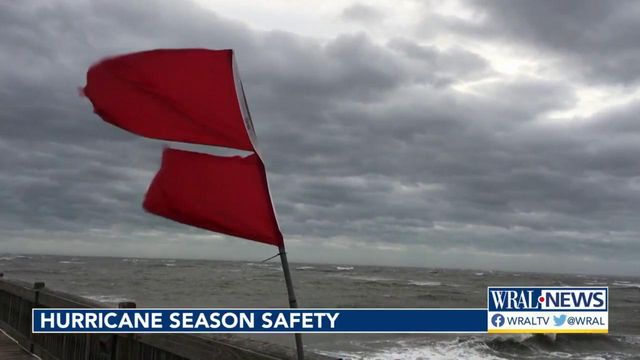What you need to know about 2021 Atlantic hurricane season
Tuesday, June 1, marks the official start of hurricane season. While the season ends on Nov. 30, the Atlantic hurricane season usually peaks in late August through September.
Posted — UpdatedThe official start of hurricane season only began weeks ago, and already a tropical depression has made landfall in the United States.
Tropical Depression Claudette was the first named storm to make landfall in the United States during the 2021 Atlantic Hurricane season on June 19.
NOAA's Climate Prediction Center has predicted another above-normal Atlantic hurricane season. Forecasters predict a 60% chance of an above-normal season, a 30% chance of a near-normal season, and a 10% chance of a below-normal season.
According to the NOAA 2021 Hurricane Forecast, we can expect: 13-20 named storms, 6-10 hurricanes, 3-5 major hurricanes.
While the good news is experts do not anticipate the historic level of storm activity seen in 2020 -- now is the time for residents in coastal regions, or areas prone to inland flooding to prepare for the season.
The formation of Monday's tropical storm shows how much activity in the tropics is beginning to pick up.
Ways to prepare before a storm
Taking photos on your camera or cellphone to catalog every item in your home may seem like a hassle, but it could save you a lot of trouble if disaster strikes. Other steps to take include keeping important documents secure in a safety deposit box, backing up computer files and making sure you have adequate and up to date insurance coverage.
The experiences of Hurricanes Hugo, Bertha and Fran have taught North Carolinians to be prepared to live without utilities and basic services for two weeks or more. Consider packing detergent, disposable plates, cups, utensils, lanterns and fuel amongst the items in your 14-day supply kit.
Remember: When packing, be realistic about what you can carry. Pack only what is essential for surviving the storm and its aftermath.
Staying safe with WRAL News
- Follow hurricanes and tropical storms with our interactive tracking map.
- Find out what is happening in each North Carolina county during tropical storms and other widespread emergencies
- Figure out the best route for evacuation if a tropical storm or hurricane hits the North Carolina coast
- Find county-by-county emergency contacts
- See which NC rivers are expected to flood
- Closings and delays across central North Carolina
- WRAL's Live Cam Network gives live look at coastal conditions
Don't get scammed after a storm strikes
- Beware of hazards
- File a flood insurance claim
- Clean up
A look back at historic hurricanes in North Carolina
North Carolina is no stranger to major hurricanes.
Nineteen people died, and more than 200 people were hurt when Hazel moved across eastern North Carolina. More than 15,000 homes and other buildings were destroyed, with property losses at $136 million.
Hazel became a new point of reference for North Carolinians and created a high water mark for misery.
The ground was already saturated when Floyd dumped another 12 to 20 inches of rain. Rivers overflowed their banks and floodwaters began to cover roads and inundate entire communities.
Floyd killed 52 people in North Carolina – most of whom drowned as they tried to flee to higher ground in their cars. More than 87,000 people registered with the Federal Emergency Management Agency. The floods destroyed about 8,000 homes and damaged more than 67,000. About 12,000 businesses were damaged.
The flooding caused about $6 billion in property damage and halted agricultural production in eastern North Carolina, causing more than $1 billion in farm losses. The floods killed nearly 3 million chickens and turkeys and more than 30,000 hogs.
Years later, many communities affected by the devastating floods still haven't fully recovered.
Over the next three days, it produced up to 30 inches of rainfall over eastern North Carolina. Interstates 95 and 40 were both closed due to flooding, and 42 people died across the state.
Related Topics
• Credits
Copyright 2024 by Capitol Broadcasting Company. All rights reserved. This material may not be published, broadcast, rewritten or redistributed.






